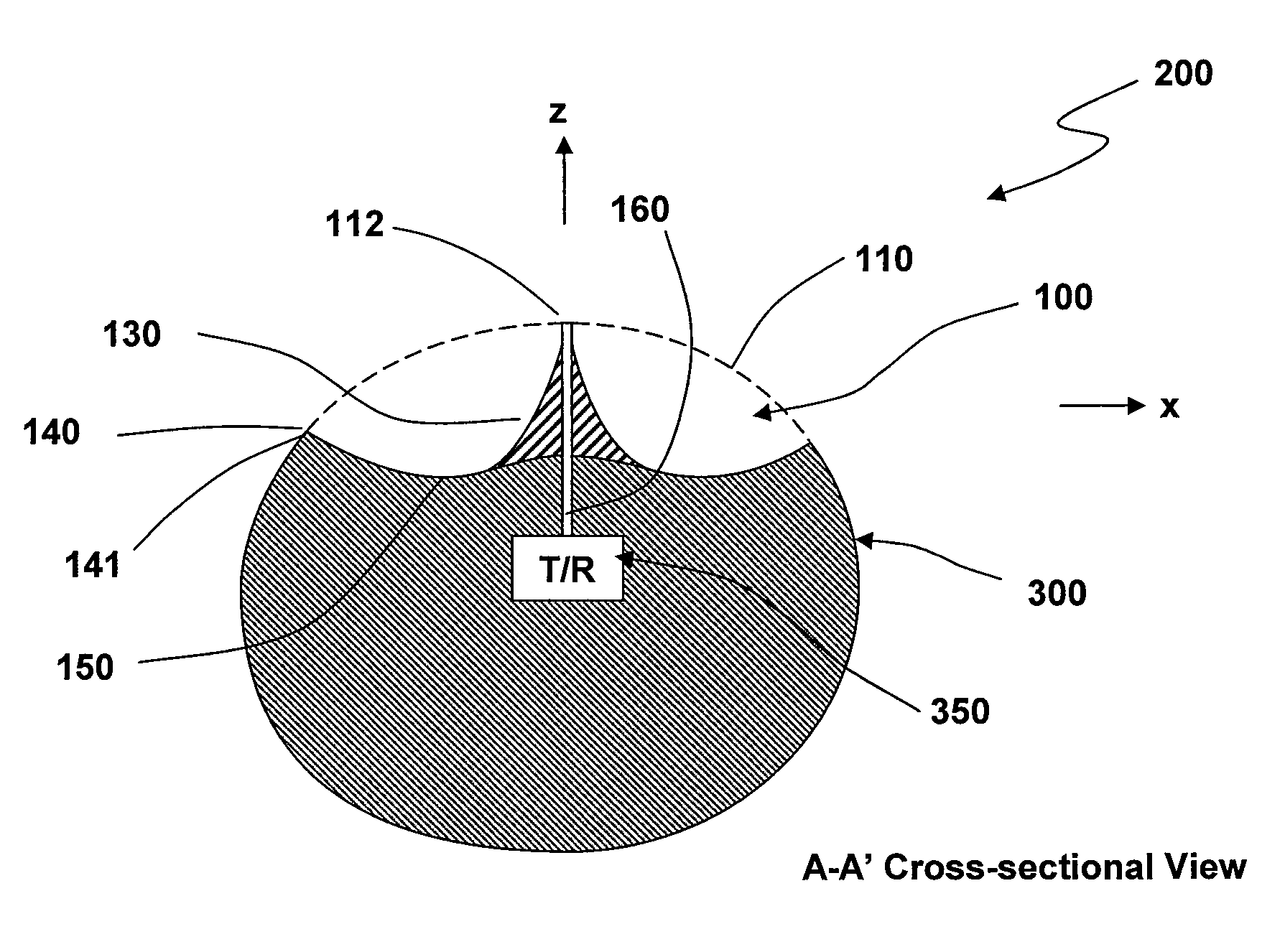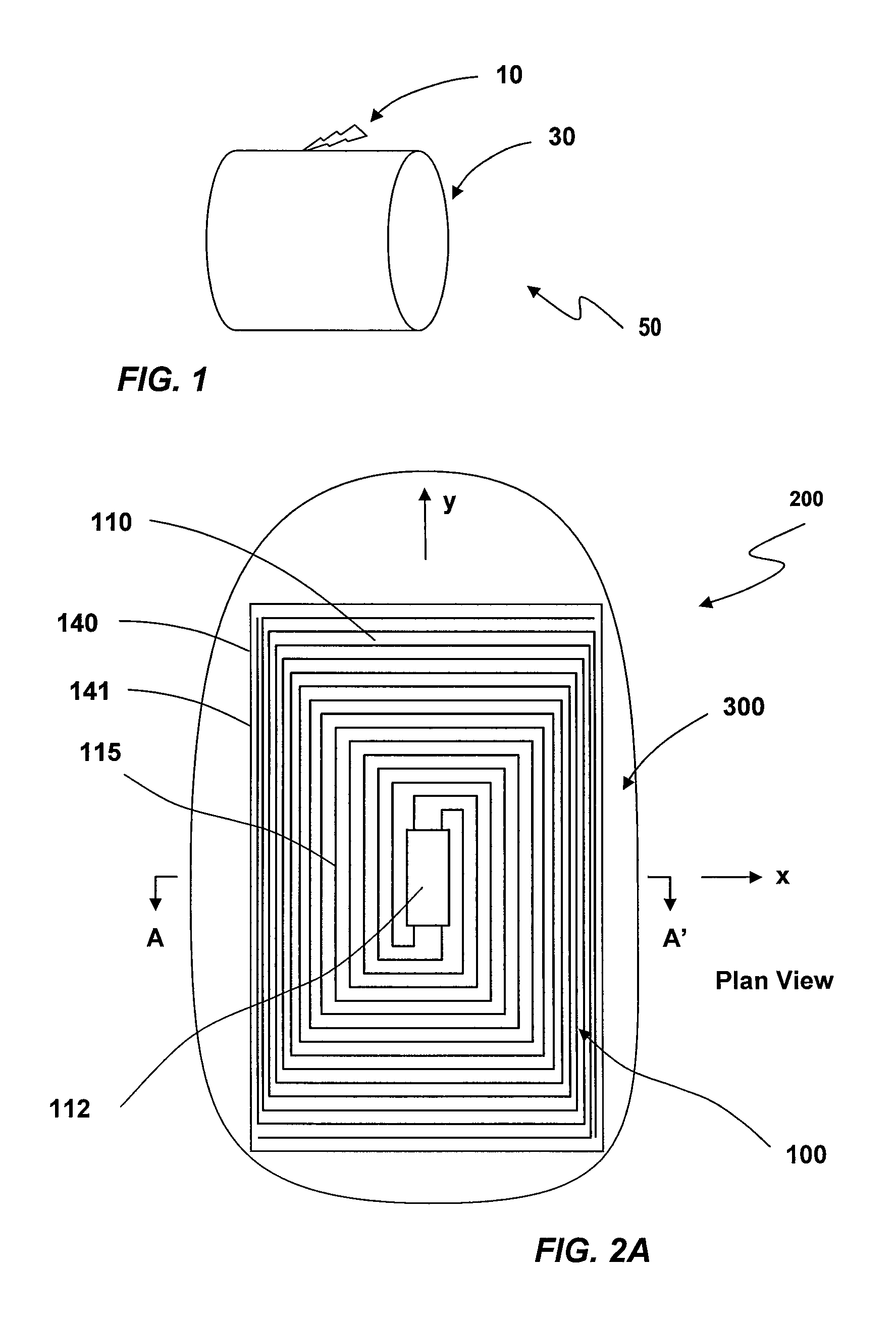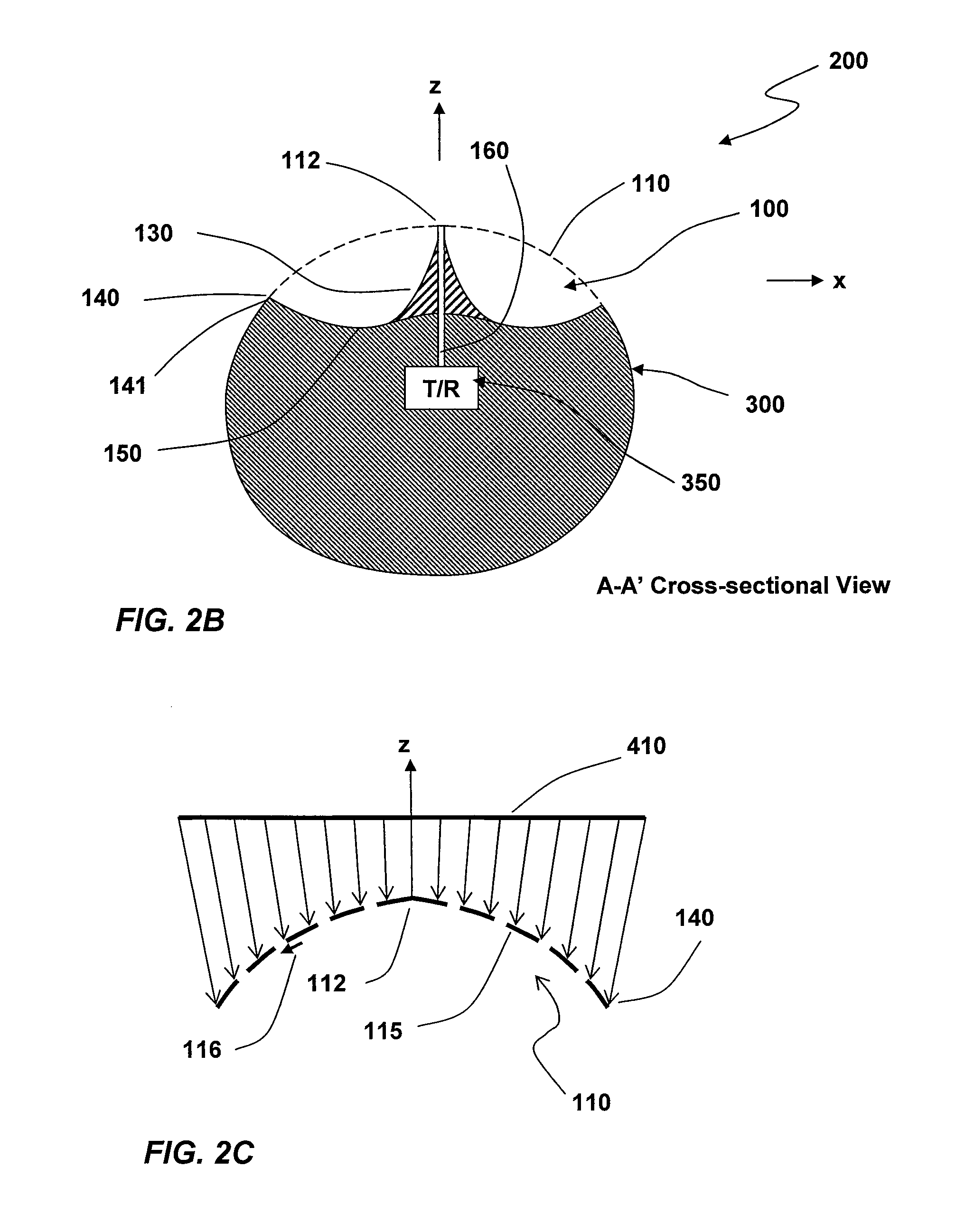Small conformable broadband traveling-wave antennas on platform
a technology of broadband and traveling wave, applied in the field of radiofrequency antennas, can solve the problems of inability to meet most conformability requirements, inability to meet broadband and smallness/conformity inherently conflicting requirements, and limited bandwidth of antennas, so as to achieve the effect of enhancing the effective size of the antenna and enhancing the antenna gain bandwidth
- Summary
- Abstract
- Description
- Claims
- Application Information
AI Technical Summary
Benefits of technology
Problems solved by technology
Method used
Image
Examples
Embodiment Construction
[0034]Referring now to FIG. 1 depicting an antenna 10 mounted on a platform 30, the antenna / platform assembly is collectively denoted as 50 in recognition of the inseparable interactions between the antenna 10 and its mounting platform 30, especially when the dimensions of the antenna are smaller than, say, ½ wavelength.
[0035]In a preferred form of this invention, a conformable broadband traveling-wave (TW) antenna coupled with a platform is depicted in the plan view in FIG. 2A and a cross-sectional view in FIG. 2B at the A-A′ plane of FIG. 2A. A broadband TW antenna 100 is conformally mounted on a platform 300, and as an integrated antenna / platform assembly 200. By conformal mounting it is generally meant that the antenna is a low-profile structure that can be integrated onto a platform with minimal intrusion and / or protrusion.
[0036]The broadband TW antenna 100 consists of a broadband TW surface radiator 110 positioned above and spaced from a conducting ground...
PUM
 Login to View More
Login to View More Abstract
Description
Claims
Application Information
 Login to View More
Login to View More - R&D
- Intellectual Property
- Life Sciences
- Materials
- Tech Scout
- Unparalleled Data Quality
- Higher Quality Content
- 60% Fewer Hallucinations
Browse by: Latest US Patents, China's latest patents, Technical Efficacy Thesaurus, Application Domain, Technology Topic, Popular Technical Reports.
© 2025 PatSnap. All rights reserved.Legal|Privacy policy|Modern Slavery Act Transparency Statement|Sitemap|About US| Contact US: help@patsnap.com



